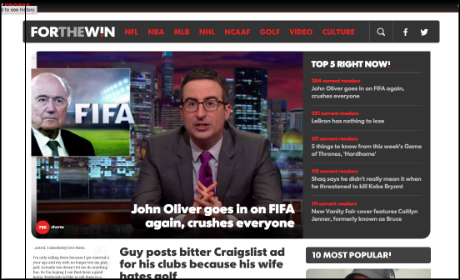Media should treat social 'independently' of print and web
Speaking at the World Editors Forum in Washington DC today, USA Today's Larry Kramer advised outlets to consider the platform audiences will be using in five or ten years


Speaking at the World Editors Forum in Washington DC today, USA Today's Larry Kramer advised outlets to consider the platform audiences will be using in five or ten years

This article was migrated from an old version of our website in 2025. As a result, it might have some low-quality images or non-functioning links - if there's any issues you'd like to see fixed, get in touch with us at info@journalism.co.uk.
News outlets should view their audiences on social media independently of their readers on print and web, according to Larry Kramer, president and publisher of USA Today.
In keeping with the different preferences and habits of social readers, outlets should package news in a way which is specifically optimised to these platforms, he told delegates at the World Editors Forum in Washington DC today.
"In our case we use almost every major social media platform," Kramer said.
"We've accepted that our content has to be distributed on multiple platforms. We've ended our fascination with the fact that the front page of the newspaper was what defined us, because the coverage itself defines us and how it appears on each of those platforms."
Facebook's Instant Articles, introduced last month , demonstrated the willingness of media outlets to publish stories specifically formatted for the social web.

Screenshot from For The Win
One example of how USA Today targets social readers can be found in its sports coverage.
The outlet has its own sports app as well as a separate sports site, For The Win , which Kramer described as "socially driven" and "conversational".
The site receives 28 million unique users independently of the main USA Today site, and is clearly aimed at being socially shareable, with an image-heavy homepage and headlines such as: Rob Gronkowski reveals his favorite drink, which 'gets you hydrated and drunk at the same time' .
"That audience is a very different audience to our traditional audience," explained Kramer, "and it's much younger – people are communicating with each other and it's a different set of stories."
However, one of the things USA Today still hasn't been able to establish through its experiments with socially-targeted news is whether it is a reader's age that makes them more likely to turn to a specific social media platform, or whether it is "how new they are to the medium".
This is something he refers to as "the Rolling Stone problem".
"Rolling Stone had a great audience for ten years and then suddenly it started to drop: they realised their audience got old," Kramer explained.
"And it wasn't about their age, it was about the type of music [they were into]."
This demonstrates how important it is for outlets to keep half an eye on future trends and emerging platforms to see where the next big audience is. After all, Facebook and Twitter are not likely to dominate the social landscape forever.
"We have to understand what our audience is now, and what it will be five years from now and ten years from now," he said.
This article previously stated Kramer spoke at the World News Media Congress rather than World Editors Forum.